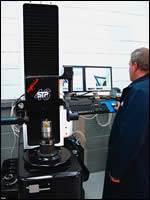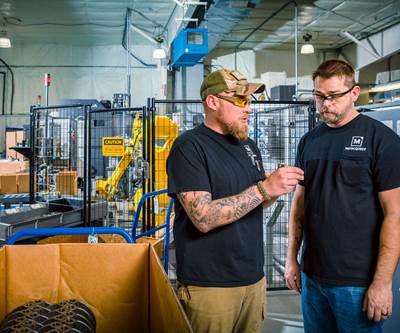The Tie Between Technology and People
Top Shops data analysis shows that investment in employees more directly correlates to profit margin than investment in equipment. Still, careful consideration of new technology matters.
Share





Our successful, third annual Top Shop Conference held in Cincinnati this past September opened with a keynote presentation from Steven Kline, Jr. Steven is the chief data officer for Gardner Intelligence, and I’ve worked with him on our Top Shops benchmarking program since its inception nearly a decade ago. The primary point he made at this year’s conference is that a shop’s investment in its employees has a bigger impact on profit margin than its investment in equipment.
Data from our nine benchmarking surveys supports this. Those shops in the top quartile of survey scores (what we refer to as the “Top Shops”) pay their employees a higher hourly wage. They also are much more likely to offer benefits such as bonuses, profit sharing, 401(k) plans, educational reimbursements, health insurance, leadership training and more.
In fact, many of the presentations at the Top Shops Conference touched on the human element of machining and running a successful manufacturing operation in general.
A shop’s investment in its employees has a bigger impact on profit margin than its investment in equipment.
So, does that mean the technology a shop adopts doesn’t matter? No! It matters even more. Think about the wealth of equipment available that can either make your employees’ jobs easier or enable them to perform other, more value-adding duties. Much of this technology can have a fast return on investment in that respect.
For example, machine spindle probes can simplify new job setups tremendously. These probes identify the location of several points on a part or workholding device to establish the part’s exact location on the machine’s table. The machine’s CNC then automatically adjusts its native work coordinate system to match that location. This eliminates manual shimming, part nudging and other time-consuming duties that would otherwise be required to get the part leveled and aligned to perfectly match the machine’s native coordinate system.
Robots can free employees from the repetitive task of loading and unloading machines, enabling the employees to perform other tasks that require thought and consideration. In fact, use of collaborative robots (cobots) is trending higher. These robots use some form of sensor technology to make it safe for humans to work safely in proximity to the cobots without being separated by fencing. So, when a cobot is tending a machine, for example, an operator can be close by measuring parts, creating assemblies, gathering tools and material for the next job, etc.
Tool presetters can speed the loading of new tools in machines for new jobs. Per survey responses, half of the Top Shops use these offline tool measurement machines compared to 42% of other shops that use them. Rather than having operators determine tool offsets at a machine as they load new tools, presenting operators with the pre-measured tools means they simply must enter each tool’s offset value into the CNC. When combined with tools having identification chips, presetters with digital read/write capabilities eliminate the need to manually enter offset values, further simplifying the task. (In fact, Steven offers more detail about the value of presetters in this free webinar.)
These are just a few examples of equipment that can help your employees perform their jobs easier. You can find out more by participating in our Top Shops benchmarking survey next year. By doing so, you will receive a custom report that not only compares your survey responses to other participants, but highlights other technology that, like those above, leading U.S. machining businesses are using to benefit their employees. The next online survey goes live in January. We’ll remind you again as we get closer to 2020.
Related Content
Rethink Quality Control to Increase Productivity, Decrease Scrap
Verifying parts is essential to documenting quality, and there are a few best practices that can make the quality control process more efficient.
Read MoreOrthopedic Event Discusses Manufacturing Strategies
At the seminar, representatives from multiple companies discussed strategies for making orthopedic devices accurately and efficiently.
Read MoreParts and Programs: Setup for Success
Tips for program and work setups that can simplify adjustments and troubleshooting.
Read MoreProcess Control — Leveraging Machine Shop Connectivity in Real Time
Renishaw Central, the company’s new end-to-end process control software, offers a new methodology for producing families of parts through actionable data.
Read MoreRead Next
A Practical Guide To Presetters
Tool measurement devices help shops save time, control runout and improve tool management.
Read MoreWhat’s Telling About This Year’s Top Shops
Here, the 2019 Honors Program winners explain strategies they’ve used to help them become successful U.S. machining businesses. Plus, you can learn more about them by attending next month’s Top Shops Conference.
Read MoreSmall Shop Sees Big Gains from Right-Sized Automation
A three-person German machine shop applies quick-change workholding and flexible robotic automation to succeed in a high-mix/low-volume production environment.
Read More






















.jpg;maxWidth=300;quality=90)






.JPG;maxWidth=400;quality=70)
